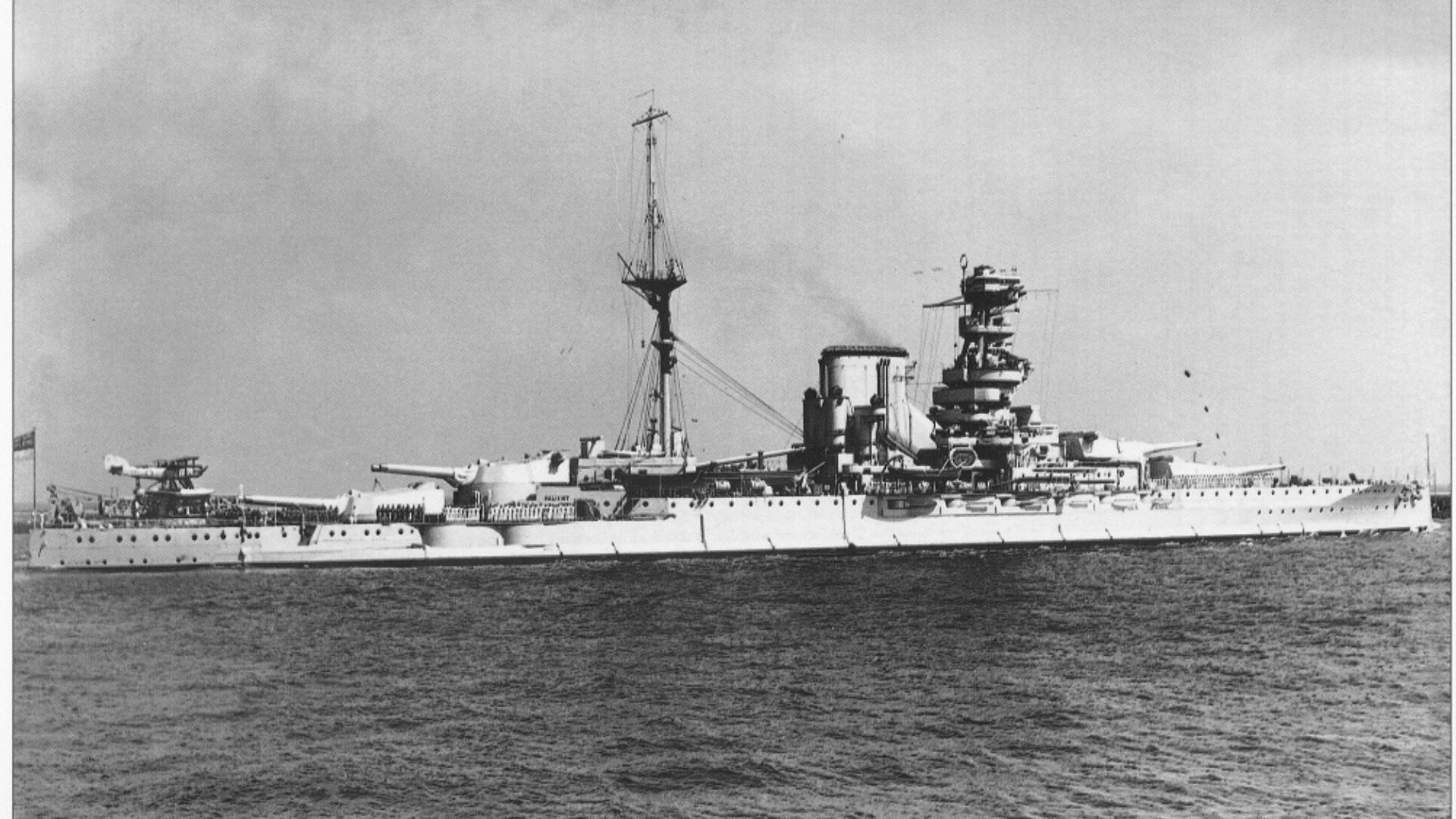
HMS Valiant (1914) was a Queen Elizabeth class battleship of the Royal Navy. Was laid down in Fairfield Shipyards, Govan, on 31 January 1913, launched on 4 November 1914 and completed in February 1916.
He began his career operating in the 5th Battle Squadron, at the Battle of Jutland, where he shot 288 rounds of381 mmand a torpedo.
Between 1929 and 1930 he was subjected to a modernization process. Torpedo bulbs were added, increasing the maximum beam to31.70 m. The two chimney, were united in one, and an anti-aircraft mount two pounds eightfold was added. Two torpedo tubes were withdrawn, and the platform for aircraft, was replaced by a catapult. These reforms, made up their travel to the 35,970 tons
In 1936 it added a second assembly eightfold antiaircraft 2 pounds. Between March 1937 and November 1939 he underwent a second modernization in Devonport. He was changed machinery reaching a total power of 80,000 hp. The maximum fuel load was 3393 tons, and its maximum speed was reduced from 25 to 23.5 knots despite the increase in power, had also increased the displacement and draft.
The war was surprised in dry dock for modernization work. Entered service on November 30, 1939 and after passing through the Caribbean and escort missions for convoys betweenCanadaandEngland, took part in the Norwegian campaign with the 2nd Battle Squadron of Home Fleet.
From there he was assigned to Force H, based inGibraltar, with which he fought against the French fleet at Mers-el-Kebir, on July 3, 1940. In August passed the Mediterranean Fleet, based inAlexandria. In September held a carrier escort duties in the attack onBenghazi, escorting convoys toMaltaand bombardment of Valona on the Adriatic coast or Bardia inNorth Africa.
He fought in the Battle of Cape Matapan where he threw for five barrages on Zara and bombedTripolion April 1, 1944.
Back inAlexandriastruck a mine on day 2, which caused minor damage, so it could take part in the operation of Crete, where he was hit twice in the stern by German aircraft bombs, on May 26, forcing him to remain in dry dock inAlexandriauntil mid-July.
He continued to operate in the easternMediterraneanuntil the December 19, 1941. A diver Italians placed a mine under a locker in the bow section, the mine explosion caused a hole 18 meters long by 9 wide low Tower A and flooded his tinderbox. The ship sank in shallow water, leaving an adverse list of 10 but with the deck above the waterline. A total of 17 men died in the sinking.
He was relocated months later, and thanks to temporary repairs, in May 1942 could leave forDurban,South Africa, to be repaired in depth. He was not ready until late July 1942. After his return to service, he was assigned to command of the South Atlantic, based inFreetown, where he remained inactive in port until in February 1943 he returned toEnglandfor maintenance checks.
He returned to Alexandria on June 23, 1943. He took part in the landing of Salerno, bombarding positions German coastal from 9 to 16 September, and in October returned to England for further revisions that lasted until 1 December, returning to active duty in January 1944 was part of the 1st Squadron Battle of the Eastern Fleet based in Ceylon.
On August 8, 1944, when the battleship was in Trincomalee, undergoing maintenance in dry dock AFD28, it collapsed and the battleship literally “fell” to collapse the structure that supported, provoking serious damage, its two internal propellers got stuck as one of its rudders.
After some intense emergency repairs, HMS Valiantbound for Alexandria sailed via the Suez Canal for repairs, browsing only 8 knots. On October 21, ran aground at the southern entrance to the canal and remained there until December 9, the day he could sail bound for England via theCape, arriving at its destination on January 14, 1945.
He was discharged on February 1 to begin repairs of the accident, they had not finished when the war ended, so they were abandoned. After years forgotten and used as a warehouse, HMS Valiant was finally scrapped in August 1948.